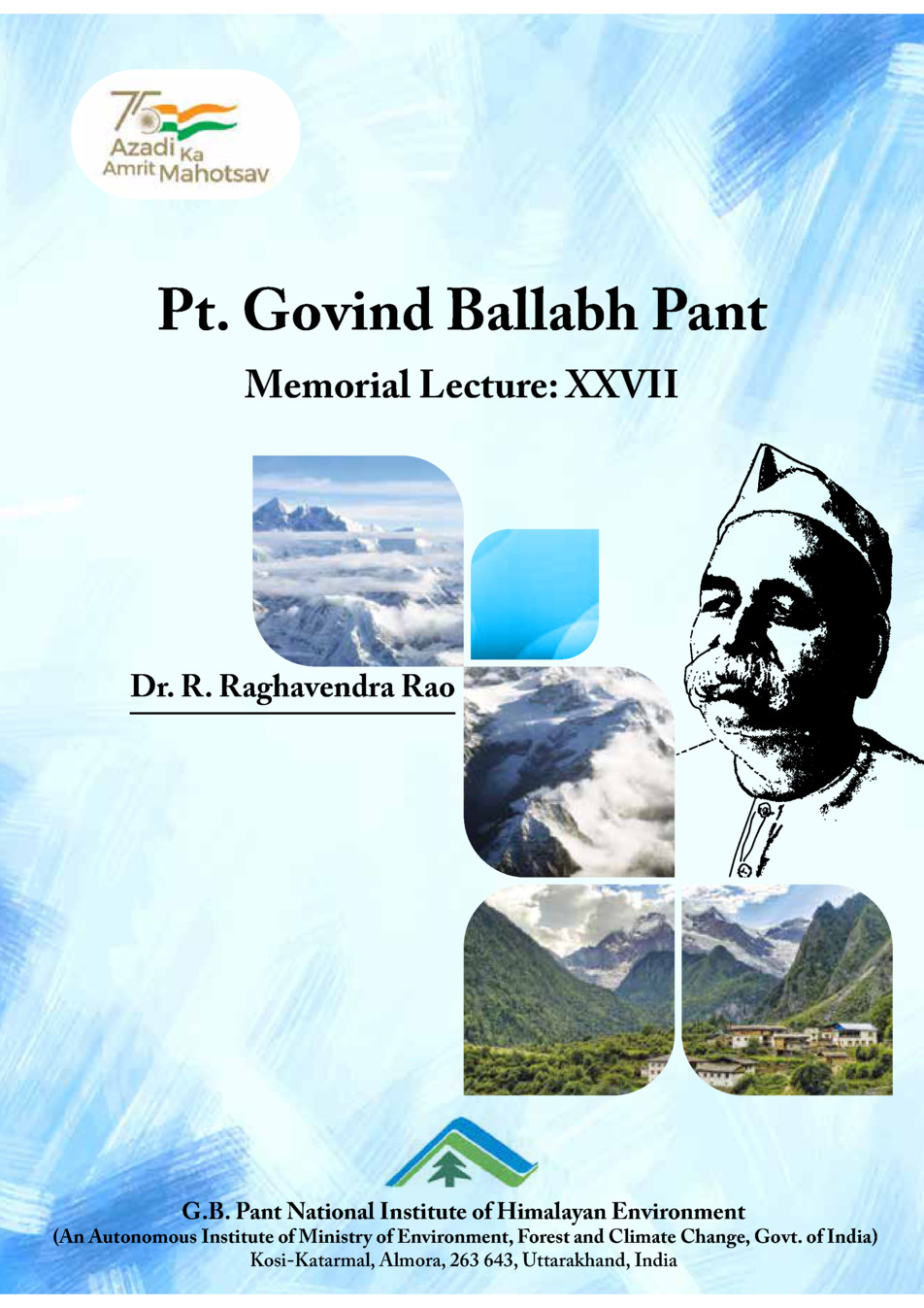Memorial Lecture
Memorial Lecture
Memorial Lecture Pt. Govind Ballabh Pant
Summary:
Dr. Raghavendra Rao, a distinguished scientist, has been honored with several awards and recognitions for his significant contributions in plant taxonomy, ethnobotany, and biodiversity conservation. With a vast research and development experience spanning over 40 years, Dr. Rao has made substantial contributions to the field, having published numerous research articles and scientific books.
(Page 1)
G.B. Pant National Institute of Himalayan Environment, where the memorial lecture took place, was established to focus on integrated management strategies for conserving natural resources in the Indian Himalayan Region. The institute has made notable progress over the years, thanks to the dedicated efforts of its directors and faculty members.
(Page 1)
The Himalayas, known as the world's tallest and youngest mountain range, have a rich geological history dating back millions of years. The region's diverse flora and climatic conditions have led to the classification of the Himalayan systems into different regions, such as the West Himalaya, East Himalaya, and Central Himalaya, each with unique characteristics and biodiversity.
(Page 2)
The Himalayan flora exhibits a wide range of temperate and tropical elements, with distinct plant species endemic to specific regions. The distribution of flora in the Himalayas reflects a blend of European, Central Asian, Chinese, and Mediterranean elements, showcasing the region's rich botanical diversity and evolutionary history.
(Page 2)
Phytogeographic analysis reveals the intricate relationship between the West and East Himalayan flora, highlighting the transition zone between these regions. The presence of gymnosperms like Pinus gerardiana and Juniperus macropoda in the Western Himalaya distinguishes it from the Eastern Himalaya, which boasts a higher diversity of coniferous species.
(Page 3)

